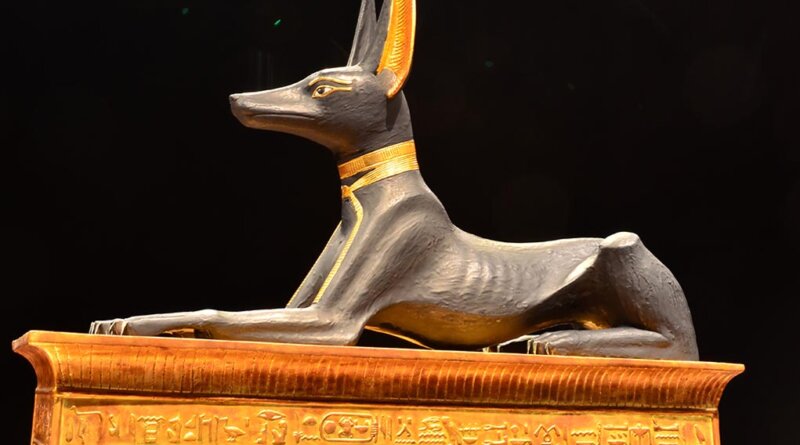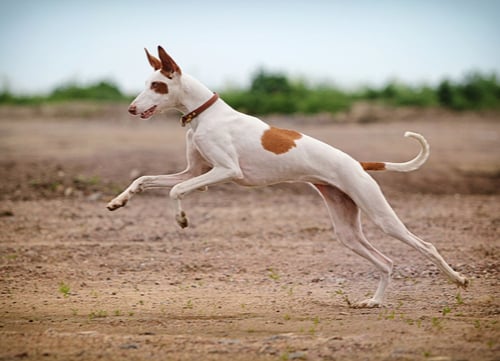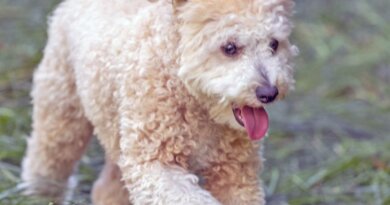Most Popular Egyptian Dog Breeds in the United States
Egypt is home to some of the oldest dog breeds in the world. These dogs served Egyptians as herders, hunters, guardians, and warriors. They played an integral role in Egyptian society and people believed that their dogs continued to serve them even after death. Let’s find out more about these unique dogs from an ancient land that are becoming more and more popular in our modern country.
Dogs in Ancient Egypt
Ancient Egyptians chose dogs as domestic companions early. Domesticated dog bones date back to 5000 BC. Around five centuries later, pictures of dogs with collars and leashes began appearing in tomb paintings, sculptures, and artifacts. Breeds were developed to not only herd, hunt, guard, and fight but also to be companions. The ancient Egyptians loved their dogs so much that they preserved them as mummies, so that their beloved companions could accompany them after death to the afterlife. The Egyptians also believed that after their dogs died, they could serve as messengers to the god Anubis, who had the head of a canine. Ancient Egyptians regarded dogs so highly that catacombs and portions of cemeteries were set aside for their burial.
If you’d like to find an Egyptian dog of your own, check out the five breeds that placed in the American Kennel Club’s rankings for the most popular dog breeds in the United States for 2020 (based on its 2019 registrations), plus we’ll look at two more Egyptian dogs that did not.
Basenji
Leaping up to 87th place in the rankings is the Basenji, an apartment dweller’s dream. Adaptable and laidback, this medium-sized dog doesn’t bark but makes a sound something like a chortle or a yodel instead. One of the oldest breeds in the world, depictions of these dogs appear on the tombstones of pharaohs. Basenjis were bred to hunt by both sight and sound. They run fast enough to hunt birds successfully. Today, basenjis are generally companion dogs rather than working dogs.
Standing 16 to 17 inches tall, Basenjis weigh between 22 and 24 pounds. They have large, pointed ears and a tail that curls up over their back. Their short coat most often comes in brown and white, but there are black, red, and brindle (striped) varieties as well. Their feet are white, as are the chest and tip of the tail. They may also have other white markings.
Calm and smart, they also have a stubborn streak and can be a challenge to train. They can also be independent and reserved around new people.
Basenjis are fastidious about their cleanliness, and like a cat, will clean themselves all over with their tongues. They don’t have the typical “doggy odor,” another plus for owners that live in tight quarters. They do shed, though, so weekly brushing is required to keep up with it.
They do best with an active owner, who can commit lots of time for exercise, play, and enrichment activities. As with most working dogs, they have boundless energy, and keeping them active and engagement will help prevent destructive behaviors.
Saluki
The elegant Saluki blazes into spot 125 in the rankings. The Saluki may be the world’s oldest domesticated dog, perhaps going back as far as 7000 BC. Known for its speed, the only dog that’s faster than the Saluki is a greyhound. This majestic sight hound was bred for hunting and kept by royalty around the ancient world, including Egyptian pharaohs. The famous conqueror Alexander the Great supposedly also had a Saluki.
At 23 to 28 inches tall, with a weight of 40 to 65 pounds, the Saluki resembles a greyhound, except that it has a softer coat and long, feathery ears. The coat is either feathered or smooth and comes in a variety of colors, including shades of white, black, chocolate, tan, fawn, golden, red, and silver. Although the coat is short, the Saluki still sheds a bit. Weekly brushing helps manage the shedding and keeps the coat soft. Like Basenjis, Salukis are very clean, without a “doggy” odor.
Highly adaptable dogs, they can live in any climate. Salukis need lots of daily exercise and playtime to keep them from becoming bored and engaging in destructive behaviors. A typical sight hound, they chase small animals so should be walked on leash or allowed to run in fenced-in enclosures. They don’t do well in houses with small animals, since they see them as prey.
Salukis are gentle and loyal, but they can also be independent, stubborn, and sensitive. They tend to be reserved around new people. Ongoing training with plenty of positive reinforcement is needed. Salukis also enjoy canine sports like lure coursing and flyball. Because they are loyal and form strong bonds with their people, they may also be prone to separation anxiety.
Pharaoh Hound
Standing proudly at a rank of 161, this regal breed is technically designated as a native of Malta. However, it’s thought that Phoenician traders brought these Egyptian hounds to Malta and to the rest of the ancient world. In Malta, the breed is known as “Kelb tal-Fenek,” which means the “dog of the rabbit,” since this breed hunted rabbits there. Rabbit-hunting was not considered a sport but a necessity as the rabbits were hunted as food. Other names for the Pharaoh Hound include the “Egyptian Hound” or “Egyptian God Dog.” Bred to be a hunter, this dog is fast, clocking a running speed of up to 35 miles an hour.
The Pharaoh Hound stands 21 to 25 inches tall, with a weight of 45 to 55 pounds. This dog is slim, graceful, and athletic with large, pointed ears, a slender snout, and a long tail. Their short shiny coat comes in shades of red, brown, and tan. The coat does not shed much, so a weekly brushing is usually enough for maintenance.
Loyal, friendly, and affectionate, Pharaoh Hounds form strong bonds with their people and normally do well in households with children. No small pets in the house, please—these sight hounds will perceive them as prey to chase down. Pharaoh Hounds have a high level of energy, so they require an active owner, who can give them lots of exercise and playtime. If Pharaoh Hounds are bored or left alone for too long, they will engage in destructive behavior. A fenced-in yard and on-leash walks are musts to keep this speedy sight hound safe.
Ibizan Hound
Although the Ibizan Hound’s line traces back to Ancient Egypt, this dog is considered a native of the Balearic Islands, off the south eastern coast of Spain. The name of the breed comes from Ibiza, one of those islands. An old breed, Ibizan Hounds are traceable in Egypt back to around 3400 BC. Depictions of dogs that look like these sight hounds have been found on many Egyptian tombs and artifacts. They were bred as hunting dogs.
Coming in at 171 in the rankings, the Ibizan Hound stands between 22 and 28 inches tall. (The females are significantly smaller than the males). They top the scale at anywhere between 45 and 50 pounds. They have the large, pointed ears of the Basenji, combined with the slender, elegant body of a Saluki. Their coats can be smooth or wiry and come in solid white or red or combinations of those colors. Their short coat requires an occasional brushing.
As a sighthound, this dog can’t be trusted with small pets in the house. Outside, they’ll chase small animals as well, so fenced-in yards and on-leash walks are required to keep these dogs safe. With endless amounts of energy, Ibizan Hounds do best with active owners. If these hounds get enough daily exercise, then they’re calm and quiet inside the house.
Very sensitive and easily stressed, Ibizan hounds want a familiar, structured routine. They develop strong bonds with their people but tend to be reserved around strangers. For that reason, they make effective watchdogs, alerting their owners when someone new comes around.
Sloughi
Squeezing in at 191 in the American Kennel Club rankings is the Sloughi, a lean, swift sighthound. Also known as the “Arabian Greyhound,” this dog was originally bred to hunt gazelle, wild pigs, jackals, and fox. Where exactly the Sloughi originated is unknown, but we do know that Egyptian nobles, among others, used them as hunting dogs.
Standing 24 to 29 inches high, this graceful dog weighs around 40 to 63 pounds. The short coat comes in several shades, including cream, tan, brown, and red, sometimes with black markings or brindling.
The Sloughi forms strong bonds with its people but doesn’t normally do well in a family with young children. This dog tends to be wary of strangers. With its strong prey drive, this dog shouldn’t trusted with small pets inside the house. Outside, the Sloughi will chase small animals, so it should be walked on leash and given a safe enclosed yard with space to run. Like most sight hounds, the Sloughi needs a lot of exercise every day and will do well with an active owner.
These dogs are intelligent but also stubborn and sensitive. Engaging training with positive reinforcement is a must.
The next two dogs on the list are more like “honorable mentions” because they didn’t make the American Kennel Club rankings. Both dogs hail from Egypt.
Armant
With its shaggy appearance, this dog is also known as the “Egyptian Sheepdog.” Various stories recount the breed’s origins. Some believe this breed originated when Napoleon arrived in Egypt with his army in 1798 and bred Briards with the local dogs. Another account says the dogs developed from ancient Egyptian farm dogs and appeared in the town of Armant in the early 1900s. Armant is located on the west bank of the Nile River, near Thebes. These dogs have been used for herding and guarding livestock.
The Armant stands 21 to 23 inches tall and weighs between 50 and 65 pounds. The shaggy long coat comes in several colors, including black, black and tan, brown, and gray. Daily brushing is recommended to maintain the long coat. The ears can be pointed or dropped, while the tail is curled.
This intelligent, gentle dog forms tight bonds with its people and does well with children. Because Armants love being part of the family, they are prone to separation anxiety. While they function the best when they have a job to do, they will be equally happy with an active owner who gives them a lot of exercise. They also need an enclosed yard with room to run safely.
Armants are highly trainable, and they need early socialization and training or they may have trouble getting along with other dogs and pets.
Baladi
Our last dog is not a purebred, but they are the most common canine in Egypt. Also known as the street dogs of Egypt, they are adaptable and intelligent. Found in the towns and countryside, they are not normally kept as pets.
Baladi dogs resemble other Egyptian breeds, with their short coats and pointed ears. They also have a curly tail. It’s thought they have descended from sight hounds like the Salukis and Pharaoh Hounds. Generally, the coat comes in solid shades of tan and brown. They don’t shed much, so a weekly brushing is enough to maintain their coats.
Rescue operations continue to crop up to care for these dogs and provide homes. They are adopted overseas or within Egypt and make good companion dogs. However, because their experiences have made them wary of people, they need a lot of love, training, and care at the start to help them settle in to their new homes.
All of these unique breeds hearken back to a time when the pyramids were built and the mighty pharaohs ruled. Looking at these dogs is like watching ancient history come to life.










